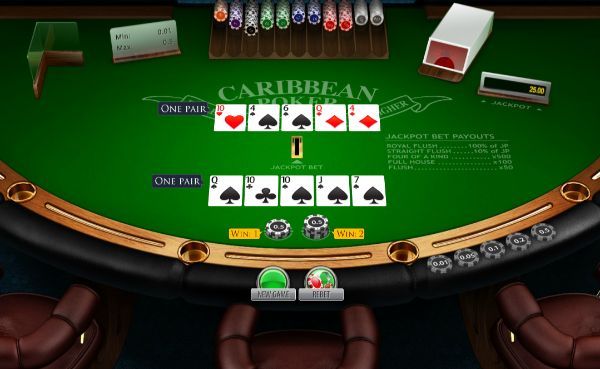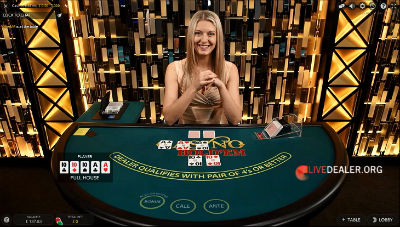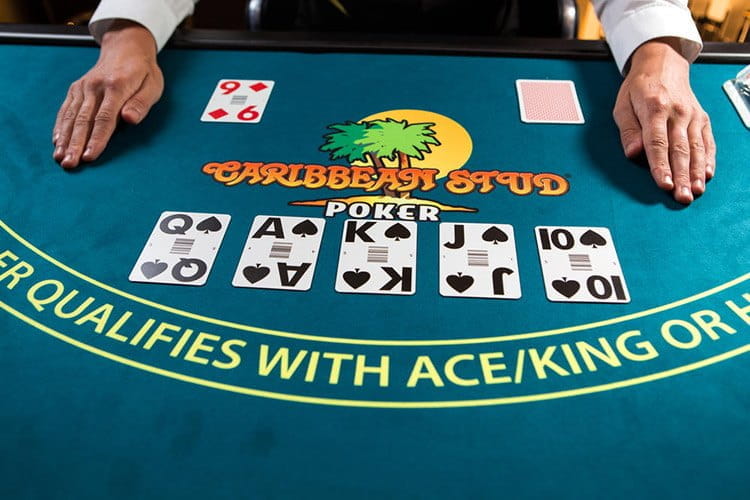The rules of Caribbean Stud Poker are easy to grasp for those who have experience in other forms of poker. Poker hand rankings remain the exact same in Caribbean Stud Poker, starting with the lowest ranking -a high card hand- and going all the way up to highest ranked hand- a royal flush. Follow the easy to read Caribbean Stud Poker rules below and you will have learned how to play the game in three minutes.
Caribbean Stud Poker Rules VCGLR Approved. Version 10.0 19 September 2016 1. Means the Victorian Commission for Gambling. Liquor Regulation. Means an invalid hand or wager, as the context requires, with no result. 1.2 Unless contrary intention appears, a TG. Caribbean Stud experts use a strategy that addresses three, rather than two, potential hands: A hand with less than an Ace/King. A hand with a pair or better. A hand with an Ace/King. The first two scenarios are simple. Fold if you have less than an Ace/King and raise if you have a pair or better. Rules & Strategy – Caribbean Stud Poker Rules & Strategy. A popular spin-off of poker developed for traditional casinos more than a decade ago, Caribbean Stud. Variations on a theme. Caribbean Stud is another game that has suffered few changes in overall structure after entering.
1) To begin with, a player must first place an ante bet before the cards are dealt. This bet is mandatory in order to be dealt into a hand. Players can also place a $1 progressive jackpot wager. By placing this bet they have the opportunity to win 100% of the huge progressive jackpot prize should they be dealt a royal flush or 10% of the jackpot for being dealt a straight flush. There are also instant payouts for four of a kind, a full house and a flush.

Caribbean Stud Rules
2) Each player at the table is then dealt 5 cards face up. The dealer also receives 5 cards. After receiving his 5 cards, the dealer then turns one of his cards face up. This exposed card is a crucial part of optimal Caribbean Stud Poker strategy which bases some decisions on what card the dealer is showing.
3) After seeing the dealers face-up card, players can elect to raise or to fold. To raise, the player must place a bet of twice the ante into the “bet box”. By folding, a player loses his ante bet.
4) After all the bets have been made, the dealer reveals each of his four unknown cards. In order to play the hand, the dealer must first qualify. In order for the dealers hand to qualify, it must consist of an ace and a king or better. This means the worst hand the dealer will play is ace, king, two, three, four. If the dealer has a worse hand than this, he pays even money on the ante bet and the raise bet is voided and returned to the player.
If the dealer has a qualifying hand it is compared to the players hand. Whoever has the highest ranked poker hand wins. Payouts are usually made according to the following table:
| Poker Hand Rank | Payout Odds |
|---|---|
| One pair or Ace or King High | 1 to 1 |
| Two Pair | 2 to 1 |
| Three of a Kind | 3 to 1 |
| Straight | 4 to 1 |
| Flush | 5 to 1 |
| Full House | 7 to 1 |
| Four of a Kind | 20 to 1 |
| Straight Flush | 50 to 1 |
| Royal Flush | 100 to 1 |
Unlike other table games such as blackjack, players are only allowed to play one hand per deal and cannot play multiple boxes at the table. Obviously this is not a disadvantage online, as you can play hundreds of hands an hour anyway. Check out the Poker Hand Rankings if you wish to learn poker from the start. Make sure to read up on Caribbean Stud poker bonuses before you decide on which casino you want to play at. This will enable you to have a greater chance of winning and entitle you to free casino cash.
Video Explaining the Rules of Caribbean Stud Poker

Caribbean Draw Poker is yet another of the popular Caribbean poker games, in all of which the goal is to make a better five-card poker hand than the dealer to win. However, unlike Caribbean Stud or Caribbean Hold’em, Caribbean Draw Poker allows the player to draw cards in an attempt to improve their hand.
This makes strategy rather complex, but also makes it much more likely for the player to make a big hand. It is licensed by Shufflemaster (see a full list of casino games and their licensees here).

How Each Hand is Played

Each hand begins with the player making an ante bet, as well as an optional progressive side bet. The player is dealt five cards, which he may examine. The dealer is also dealt a five-card hand, however only one card is exposed.
At this point the player has a decision to make. The player may fold their hand, thus forfeiting their hand and their ante bet. Or the player may choose to call, which also comes with the option of discarding up to two cards. The call bet is twice the size of the initial ante bet. Any discarded cards will be replaced by the dealer, leaving the player with a new five-card hand.

After the player has made his decisions and received any new cards, the dealer reveals his hand.
Caribbean Poker Strategy
If the dealer has a straight or better, then the dealer will stand. If the dealer has less than a straight, they will also take the option to discard up to two cards. If the dealer has three of a kind, a pair, or no pair, the dealer will draw two new cards. If the dealer has two pair, a four card straight draw, or a four card flush draw, he will take one card.
The dealer now checks to see if he qualifies. The dealer needs a minimum of a pair of eights to qualify. If the dealer does not qualify any player still in the hand wins even money on the ante bet, and pushes their call bet.
If the dealer does qualify then the dealer’s hand is compared to the player’s hand. If the dealer has the best hand, the player loses the ante and call bets. If the player has the best hand, the player wins even money on the ante bet, and wins the call bet. Pay-outs are determined by a pay chart like the one below. In the case of a tie, both bets push.
Pay Chart
| Hand | Pays |
|---|---|
| Royal Flush | 100 to 1 |
| Straight Flush | 50 to 1 |
| Four of a Kind | 20 to 1 |
| Full House | 7 to 1 |
| Flush | 5 to 1 |
| Straight | 3 to 1 |
| Three of a Kind | 2 to 1 |
| Two Pair or Less | 1 to 1 |
Pay-Outs
As in other Caribbean games, the Caribbean Draw Poker progressive jackpot is typically paid only on the player’s initial five-card hand. If the player discards and draws new cards, they cannot win the progressive jackpot (in some rare cases, lesser pay-outs are given for drawn hands).
The pay-outs are typically as follows:
| Hand | Pays |
|---|---|
| Royal Flush | 100% of Jackpot |
| Straight Flush | 10% of Jackpot |
| Four of a Kind | $500 |
| Full House | $100 |
| Flush | $50 |
Strategy for Playing
The golden rule of Caribbean Draw Poker is – never fold! Even with the worst possible hand it is worth drawing and trying to improve your hand. The reason is simple – the dealer will only qualify about 52 per cent of the time, meaning that 48 per cent of the time you’ll win regardless of the cards you hold.
Caribbean Stud Card Game
Despite the simplicity of the fold/call decision, drawing strategy can still be rather complex. You should never break up a flush (including straight flushes and royal flushes), four of a kind or full house. Only break up a straight if you hold K-Q-J-T of the same suit, since this hand gives you the opportunity to improve to a flush, a straight flush, or a royal flush. With three of a kind, discard the other two cards. With two pair, discard the odd card.
With pairs, the standard play is to hold the pair and the highest other card, discarding the two low singletons. However, there are many exceptions.
Generally, you’ll break up the pair when it allows you to draw to a four-card royal or straight flush. With tens or lower, you can also break them up to chase a four-card flush draw. Pairs lower than eights should be broken up to many three card draws as well, as these small pairs must improve to beat any qualifying dealer hand.
Caribbean Poker Stud
With no pair, you’ll want to hold onto (in order of preference) a four-card royal/straight draw, a four card open-ended straight draw, a three card royal or straight flush draw, a three card flush draw, or a four card inside straight draw. If you have none of these options, simply hold your three highest cards.